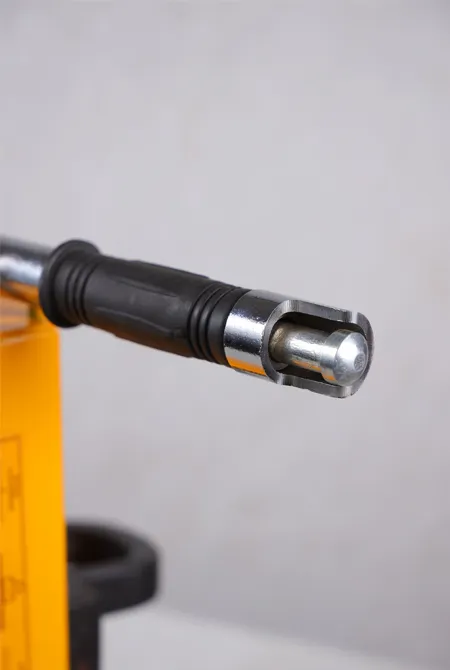Exploring the Benefits and Applications of Overhead and Gantry Cranes in Modern Industries
Overhead and Gantry Cranes An Overview
In the realms of industrial and construction operations, efficiency and safety are paramount. One of the most critical pieces of equipment that contribute to enhanced productivity is overhead and gantry cranes. These specialized cranes are designed for lifting and moving heavy loads within various environments, offering reliable solutions for material handling in warehouses, manufacturing plants, and construction sites.
Understanding Overhead and Gantry Cranes
Overhead cranes are characterized by their ability to move along two horizontal beams, which are suspended from the ceiling or an overhead structure. This design allows the crane to cover a large working area, effectively maximizing the use of floor space. Overhead cranes typically consist of a hoist, trolley, and bridge, and they can be found in a variety of configurations, including single girder and double girder setups.
On the other hand, gantry cranes feature a similar lifting mechanism but are supported by vertical legs that rest on wheels or casters, allowing them to move along the ground. They provide more versatility, as they can be positioned anywhere without the need for permanent overhead structures. This mobility often makes gantry cranes a favored choice for outdoor applications or temporary setups.
Applications and Benefits
The applications for overhead and gantry cranes are extensive. In industrial settings, these cranes are essential for transporting heavy materials, such as steel beams, large machinery, and bulky equipment. In construction, they facilitate the lifting of precast components and other heavy loads, thereby streamlining workflow and reducing the risk of manual handling injuries.
overhead and gantry cranes

One of the primary benefits of overhead and gantry cranes is their ability to improve workplace safety. By automating the lifting and moving of heavy loads, these cranes minimize the physical strain on workers and decrease the likelihood of accidents associated with manual handling. Moreover, modern cranes are equipped with various safety features, such as overload sensors and emergency stop mechanisms, ensuring safe operation.
In addition to safety, these cranes offer significant efficiency advantages. They enable quick and accurate load handling, which can significantly reduce downtime during operations. The ability to move loads through three-dimensional space (up, down, and horizontally) allows for better utilization of warehouse and production floor layouts, ultimately increasing productivity.
Maintenance and Considerations
Although overhead and gantry cranes are robust and durable, regular maintenance is crucial to their safe and efficient operation. Routine inspections, lubrications, and adjustments are necessary to prevent breakdowns and extend the lifespan of the equipment. Additionally, operators should be trained in safe operating procedures to ensure they can handle the crane effectively and respond to any potential emergencies.
When considering the implementation of overhead or gantry cranes in a facility, it's essential to evaluate the specific needs of the operation. Factors such as load capacity, reach, and the complexity of lift operations will influence the choice of crane type and configuration required.
Conclusion
Overhead and gantry cranes play an indispensable role in modern manufacturing and construction operations. Their ability to safely and efficiently handle heavy loads not only enhances productivity but also contributes to a safer working environment. With proper maintenance and operator training, these cranes are guaranteed to provide long-lasting service, proving their value across various industries. As technology continues to evolve, we can expect further innovations that will enhance these cranes' capabilities, ensuring they remain vital tools in the material handling landscape.
-
Unlock Seamless Relocation with Our Heavy Equipment Moving ExpertiseNewsJun.06,2025
-
Unleash Unrivaled Flexibility with Our Adjustable Gantry CraneNewsJun.06,2025
-
Unleash Heavy-Duty Efficiency with Our Industrial Gantry Crane SolutionsNewsJun.06,2025
-
Revolutionize Steel Handling with Our Magnetic Lifter RangeNewsJun.06,2025
-
Master Equipment Mobility with Premium Machinery Mover SolutionsNewsJun.06,2025
-
Elevate Your Material Handling with Magnetic Lifter TechnologyNewsJun.06,2025
-
YS Permanent Lifting Magnets: The Smarter Way to Handle SteelNewsMay.22,2025
